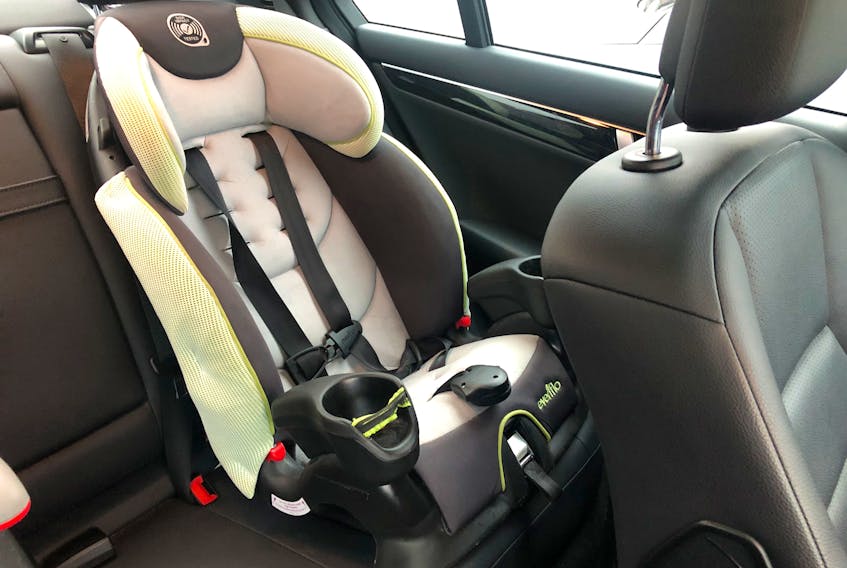It’s only natural to bundle children up when headed outside in the cold winter months. Layers and puffy coat are the usual approach. But leaving them wrapped up like that in their child seat in the car, may actually be placing them in jeopardy.
Those seats are designed to place and keep the child in the best possible position in the event of a crash. The seat structure and shape have been carefully crafted to determine that position. The belts and straps around the waist and shoulders are the most critical part of the design. Tugging them tight after fastening them, is the routine. They should be tight against the upper torso and shoulders.

Tight is the operative word.
The forces generated by a crash are astonishing. I find the “triple 50” method a good way to explain these forces. A restrained (properly-belted) 50-lb. human in a vehicle involved in a 50 km/h crash into a solid object, is subjected to 50 times the force of gravity.
In simple terms, they are subjected to a force of 2,500 lbs. They feel as if hit by a 2,500-lb. mass.
A guy named Isaac Newton observed that objects in motion remain that way until acted upon by an external force. Or they remain in motion until stopped. Seems pretty obvious. For that, and a couple of other observations, he became Sir Isaac Newton, and those observations Newton’s laws of motion.
What that means to us, is that in a crash, our internal organs continue to move forward at speed until they come to a complete stop. In the situation above, they crash into our rib cage or other bony bits at those terrible forces. Seat belts, child seats etc. have all been scientifically designed to reduce those forces, to cushion the blow by slowing the body in a controlled manner.
With that background, let’s go back to that cherished little person, wrapped in puffy layers of warm coats or snowsuits belted into their child seat.
Problem!
Those warm layers have prevented you from getting the belts properly tightened. If the harness is not tight enough, the child can move about and even slip out of the seats in a crash. At the least they will not be in the proper position for maximum protection by the belts. They might even be forced into a position of increased risk. We are not talking about just the front of the coat/suit. The puffy back and maybe even a hood, ensure they are not seated properly.
The answer?
Leave them in their “inside” clothing until securely belted in, with hats, mitts and boots. Then use a blanket or wrap for warmth — over the belts! For smaller children, put a blanket over them to keep them warm. For infants, some car seat manufacturers sell fitted blankets or covers designed to fit snugly in their seats, over the harness/belts. For larger children, put their coat on backward, with arms through the armholes.
To determine if your child’s coat or snowsuit is too bulky, pit them in their seats and fasten the belts. Pull them nice and snug. Unhook the harness straps without loosening them. If you can pinch the opposing sides of the shoulder straps between your finger and thumb, the coat or snowsuit is too bulky to be worn safely.
Bundling little ones up for winter warmth is expected. But, not in their car seat.
RELATED:









